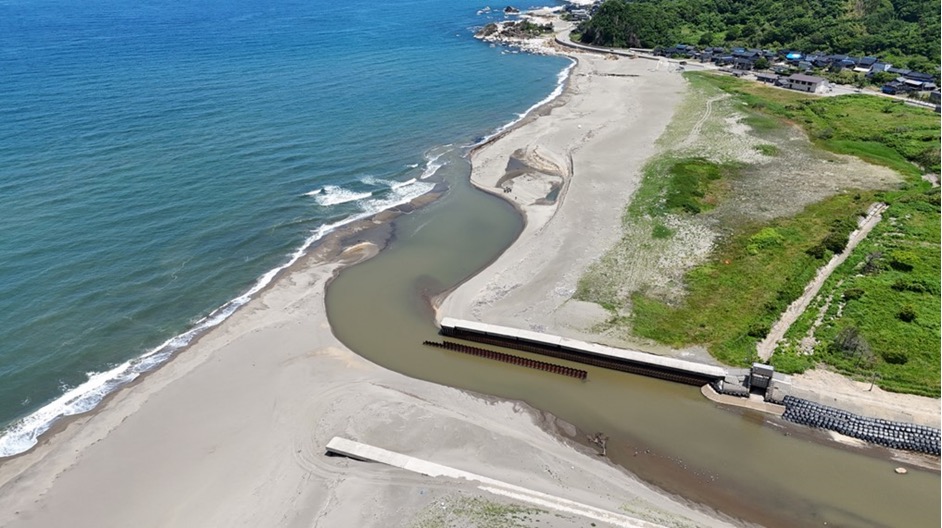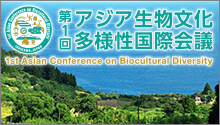At the Machino river mouth, rocks that were previously submerged in seawater were fully exposed, and numerous dead intertidal species, including purple barnacles, razor clams, and barnacles, could be seen. This illustrated the profound impact the earthquake had not only on humans but also on the marine life along the coast. River embankments were severely damaged, and channels that once flowed with water had completely dried up. However, while there were negative impacts on the wildlife, the earthquake also created new habitats. Due to land uplift, sandy beaches extended nearly 80 meters towards the sea, causing the previously straightened river mouth to meander along the newly formed sand. This area attracted many seabirds, including black-tailed gulls, which gathered to bathe and rest. Coastal vegetation was also beginning to take root in the expanded sandy areas.
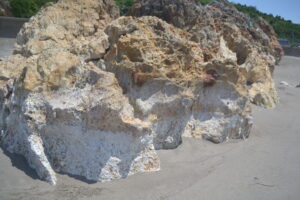
Exposed rocks due to uplift
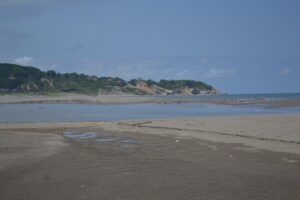
Seabirds congregating along the widened sandy beach and meandering river

Rice paddies designated as a model area for the Crested Ibis release in Ishikawa Prefecture
We also visited the wetland area in the middle reaches of the river, which had expanded due to stagnant water caused by the earthquake. As we approached the wetlands, we could hear various birds chirping. Observing the surroundings revealed many creatures, including snakes, crabs, dragonflies, and shellfish. Despite the major impacts of the earthquake, it was evident that diverse species were adapting to the new environment.
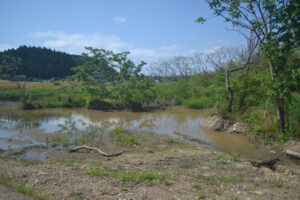
Wetlands expanded after the earthquake
While the earthquake caused extensive damage, it is also crucial to consider how to leverage the new environments created by the disaster as resources for the community. This will play an essential role in creating an attractive region and achieving recovery in the future. During this inspection, we received cooperation from local residents who expressed their desire to “consider community recovery by utilizing the natural environment of the satoyama and satoumi.” The Working Group aims to collaborate with experts from both within and outside the region to support local residents and municipalities in restoring the rich lifestyle of Noto’s Satoyama and Satoumi, as well as the natural environment that sustains it.


